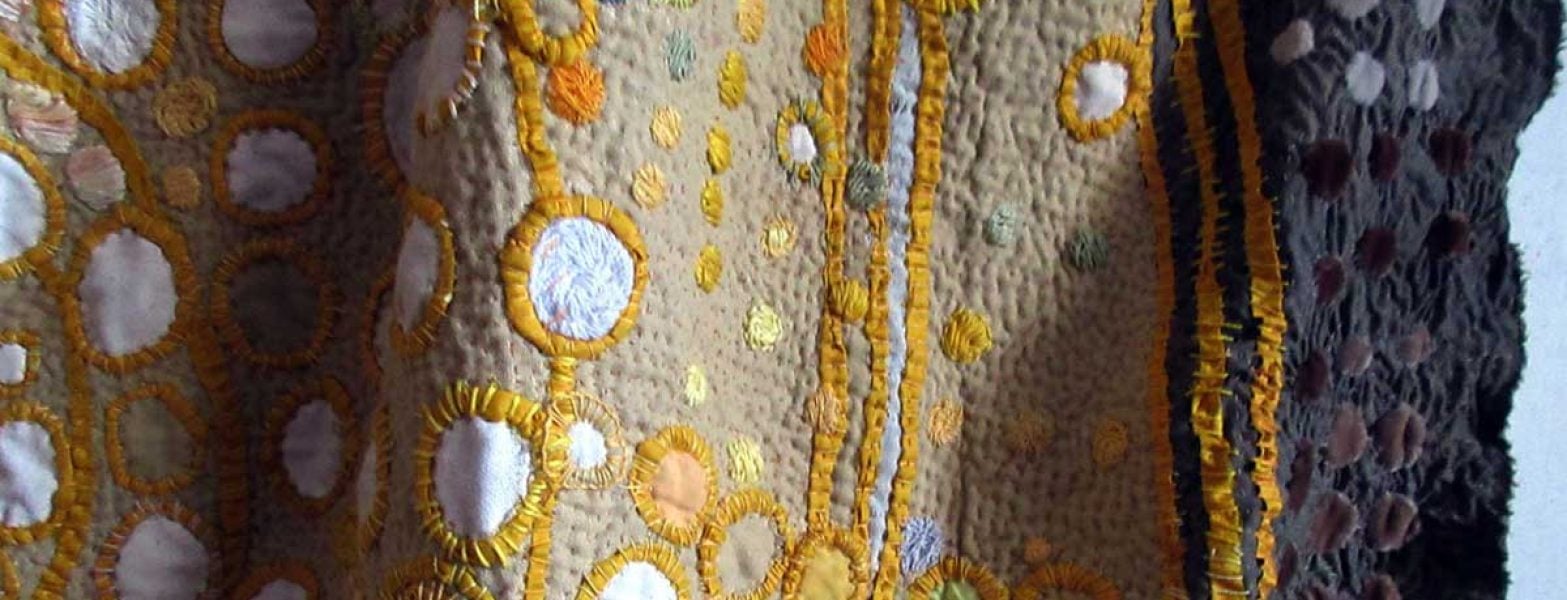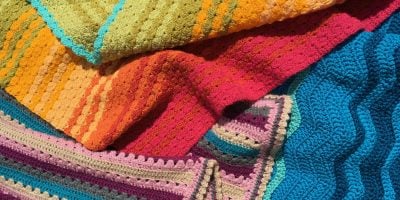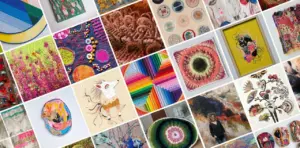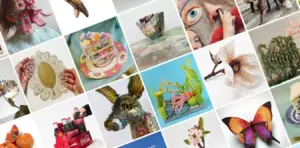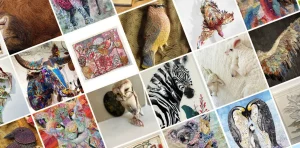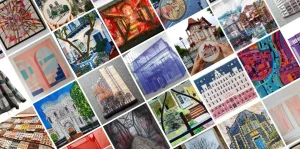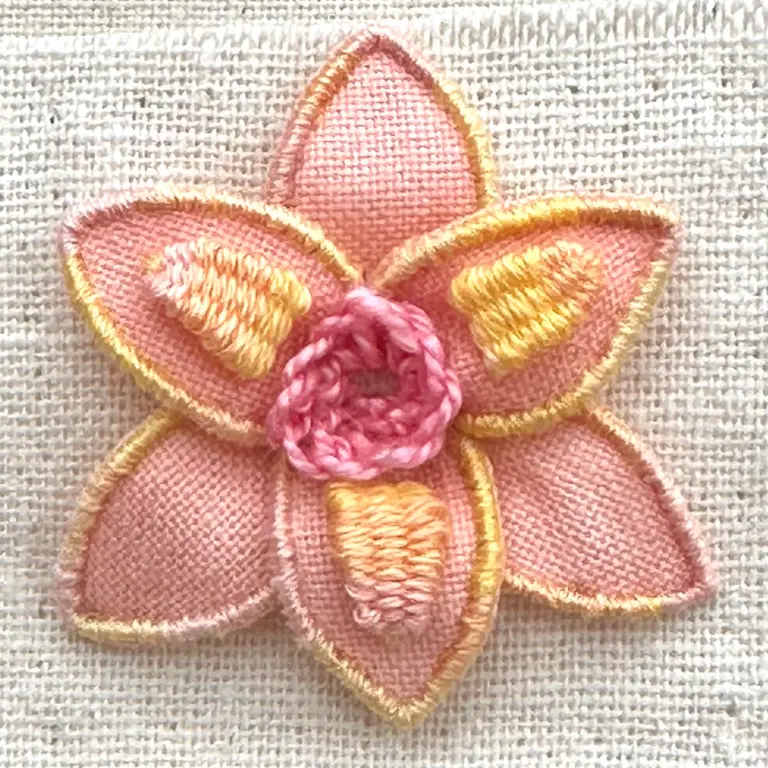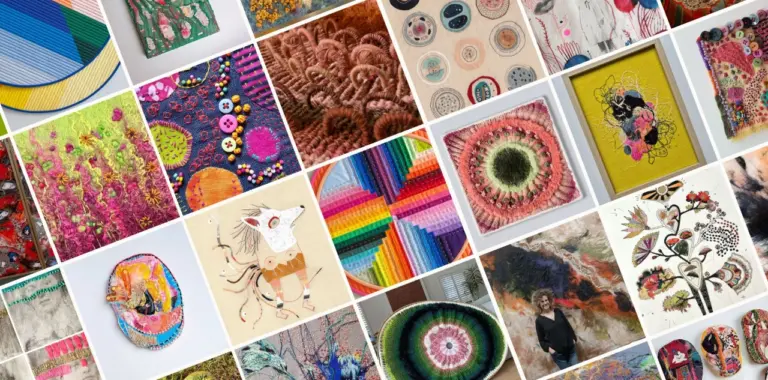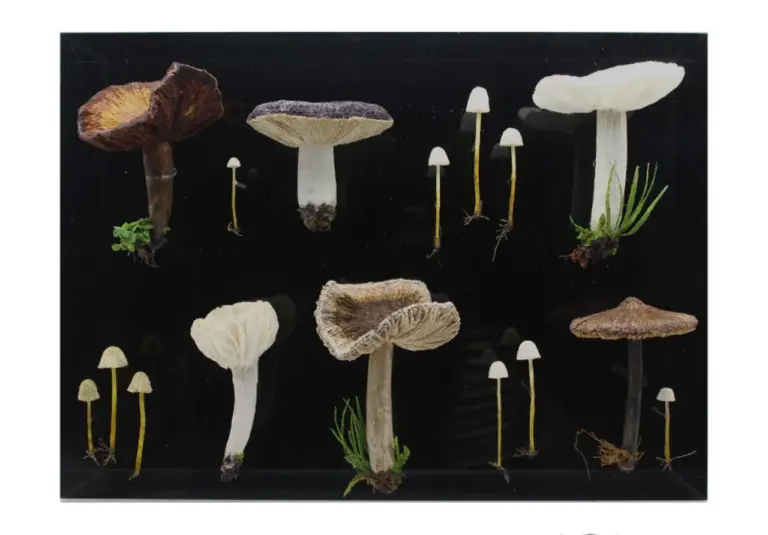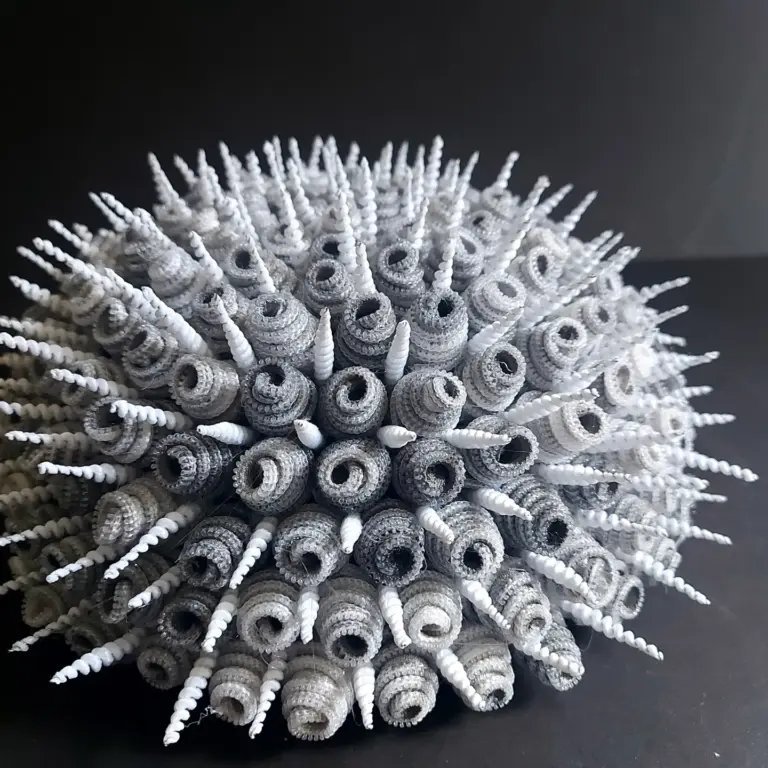Textile Artist Judy Martin is known for her traditional and delicate quilt patterns that are methodically and meditatively hand stitched. Her pieces are defined by her own commentary on multi-cultural attitudes to birth, death and sexuality, making them a powerful and fascinating medium.
For nearly 40 years Judy has been exhibiting her work in group shows across the USA, Canada and Japan and has produced countless solo exhibitions, including the prestigious Quilt National i11 and Quilt National 17, in which she won two awards for surface design.
Having studied fine art it’s no surprise that Judy’s fabric constructions combine traditional ‘women’s craft’ with conceptualism. Underpinning all of her pieces is the idea that the sense of touch is the most effective way to communicate and connect emotionally with others.
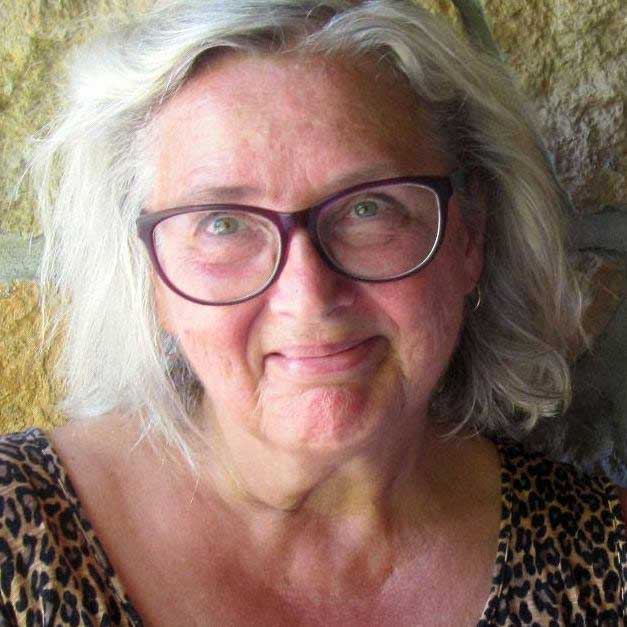
What projects are you currently working on?
“I generally work on several bodies of work at the same time. For instance, I am expanding upon my long time research into the use of red thread in world textiles in order to bring the idea of red thread protection into a North American context. A local museum curator invited me to respond to the museum’s collections of Canadian settler domestic artefacts, vintage photographs, vintage lace, as well as the building’s history of being a jail. I hope to spend some time at the museum this spring and summer in order to research the variety of artefacts and spaces and possibly involve the community in some kind of stitch project. We will see.
Another project that consumes me is the upcoming two person show with my esteemed Canadian colleague, Penny Berens from Nova Scotia. Both of us are creating new work from locally plant dyed cloth that we then hand stitch. My work for this body of work is inspired by the sky while Penny’s is inspired by the earth. At the same time, I continue to work on a large sculptural installation made from over-dyed and hand stitched old wool blankets. This last project is very ambitious. “
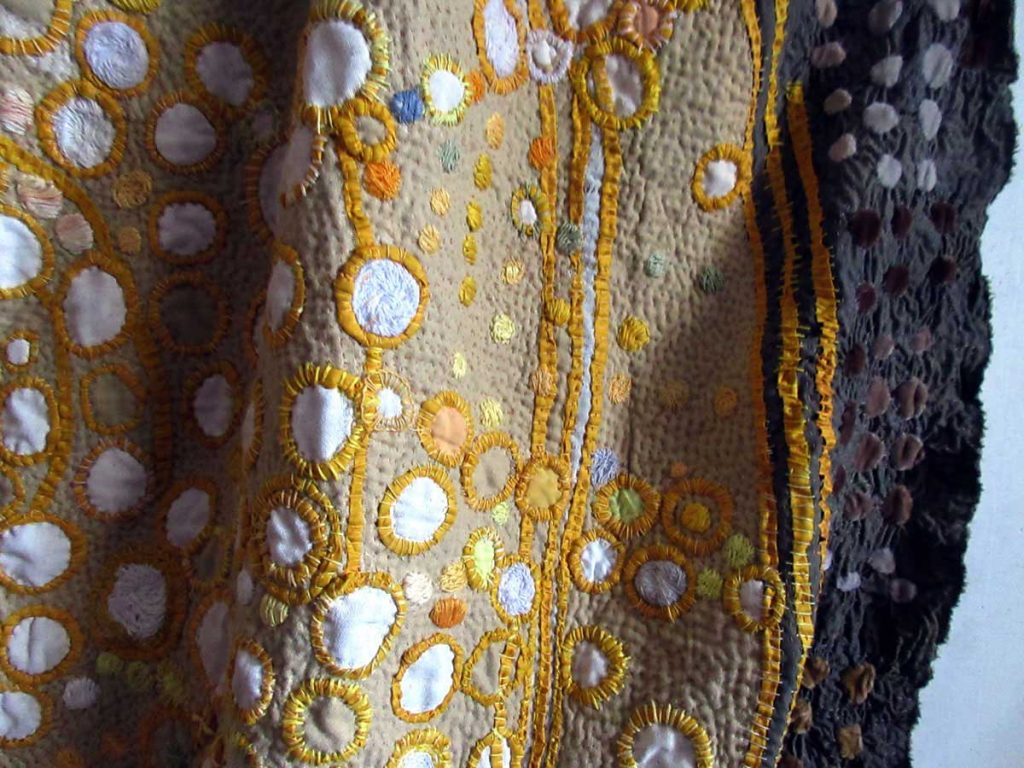
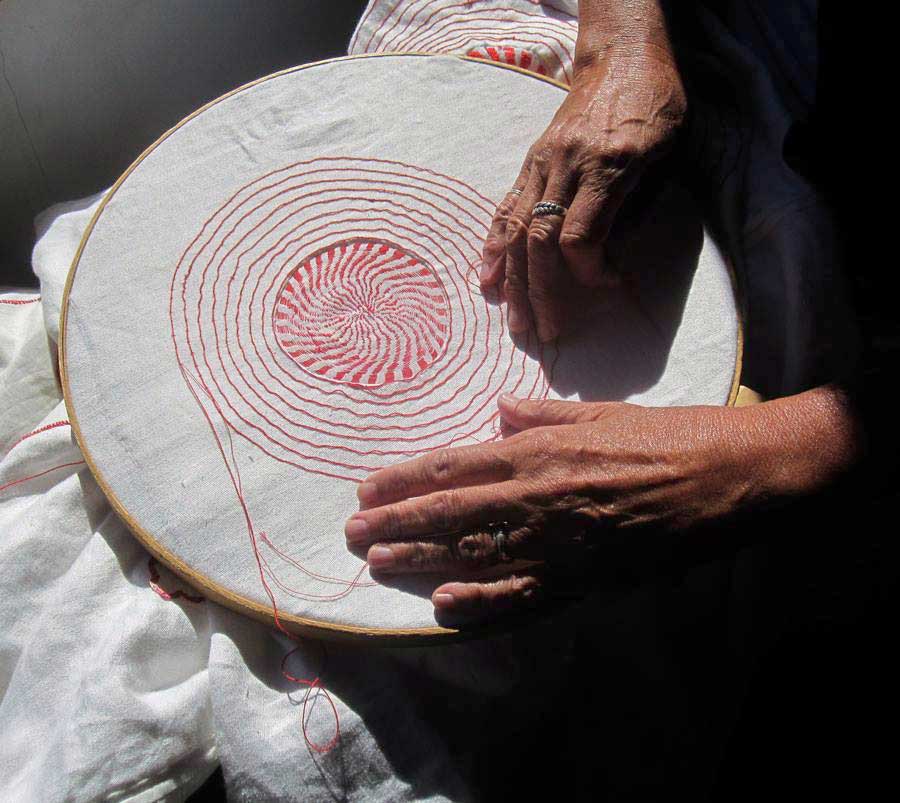
What is your opinion on creativity? Do you think that creativity is something that can be taught or nurtured?
“Yes, I think that we all have some creativity within us and do think it can be nurtured.
In my opinion, the most important thing for an artist, once she finally gives herself permission to be creative, is to find time to be alone. When I first recognised my own desire to work seriously as an artist, and was frustrated by lack of time or space, I gave myself 15 minutes a day. By this I mean that I set the kitchen timer for 15 minutes and put myself first for that short period of time, usually while the baby was napping. This small thing changed my life and soon I could find myself 30 minutes and eventually an hour.
I continue to use a timer. It seems to give me all the time in the world.”
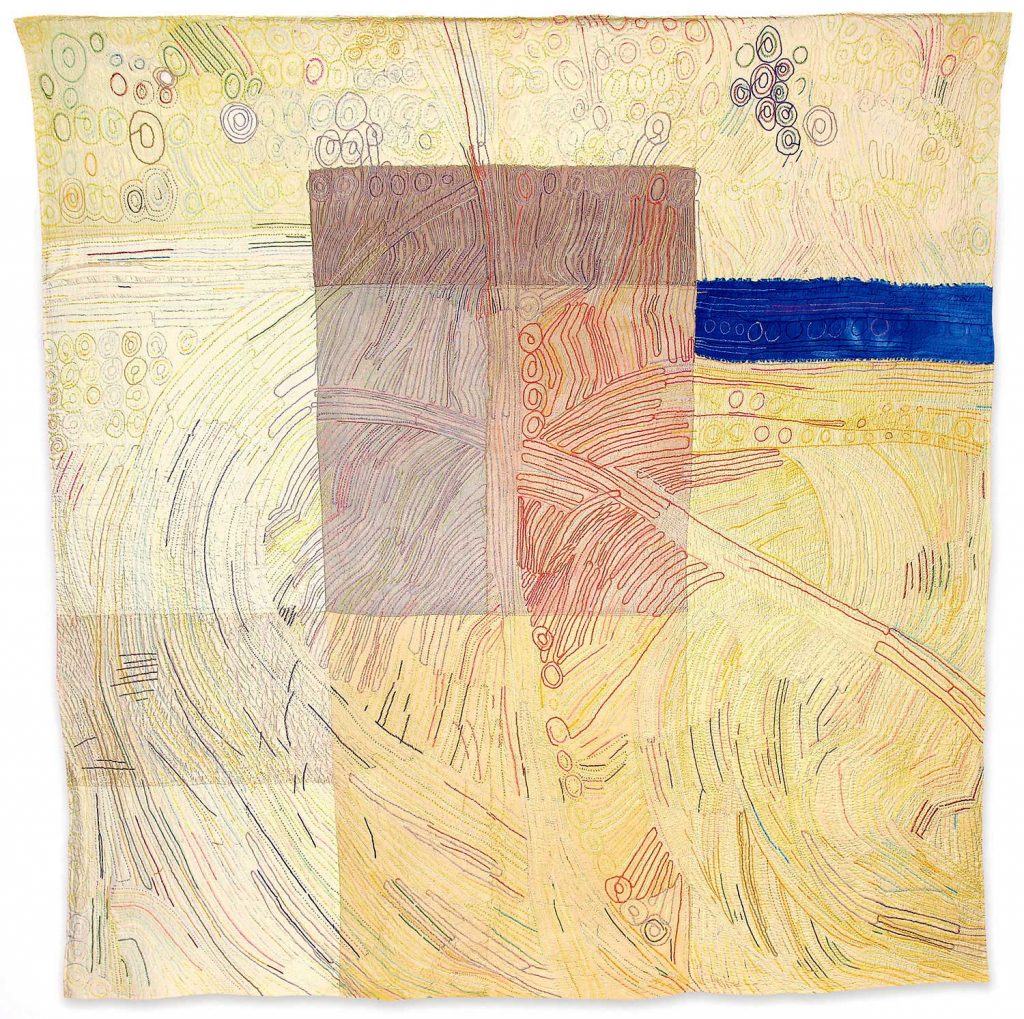
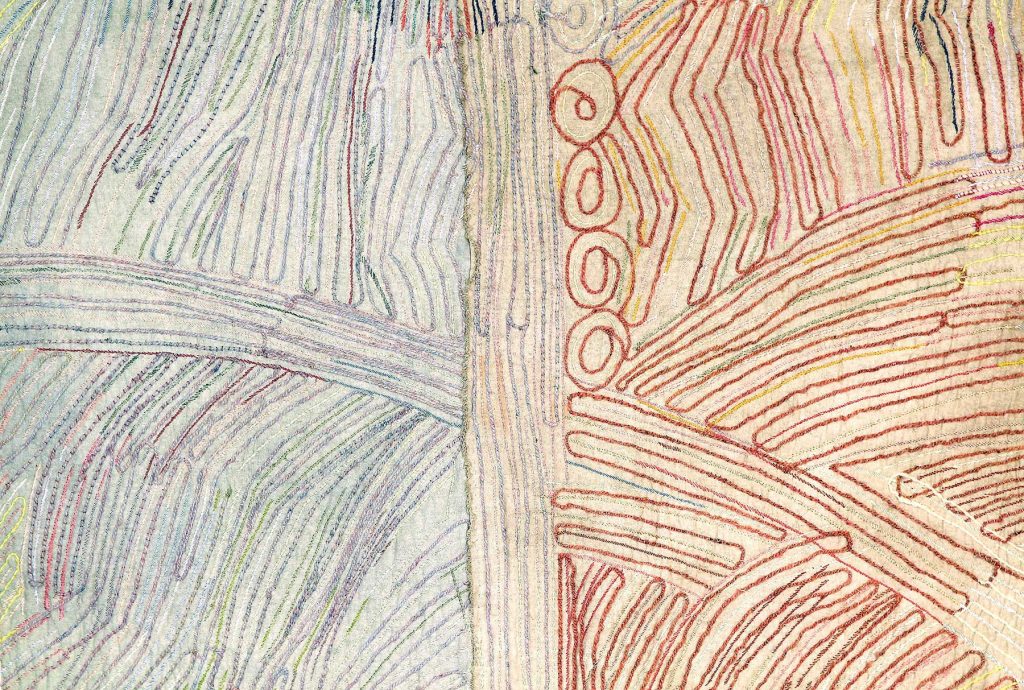
What was your first memory of stitching? Who taught you?
“My first memory of stitching is a velvet penguin that my maternal grandmother made for me. It was the size of a small pillow, and she used black silk velvet and white satin for the body. The sensuous fabrics both stimulated and soothed me. Silk velvet is now a staple in my current work, used for the reverse applique dots and shapes.
My mother taught me the basic stitches of embroidery and also how to sew clothing. She was very patient with me and had the good sense to provide the materials, a limited amount of instruction, and leave me to it. She didn’t fuss about how tiny the stitches were or make me do my work over. I learned to embroider using pre-stamped pillow cases and to sew with Simplicity patterns. I made all my own clothes throughout high school and became quite skilled with the needle although I would say that I never took any formal lessons in stitch. This might sound strange because I have a BA degree in embroidery, but I acquired that degree through distance education organised by the Opus School of Textile Art. If there were new stitches, I taught myself and then had them assessed. Instead of technique, the degree studies emphasised research into the meaning and language behind the stitched marks.”
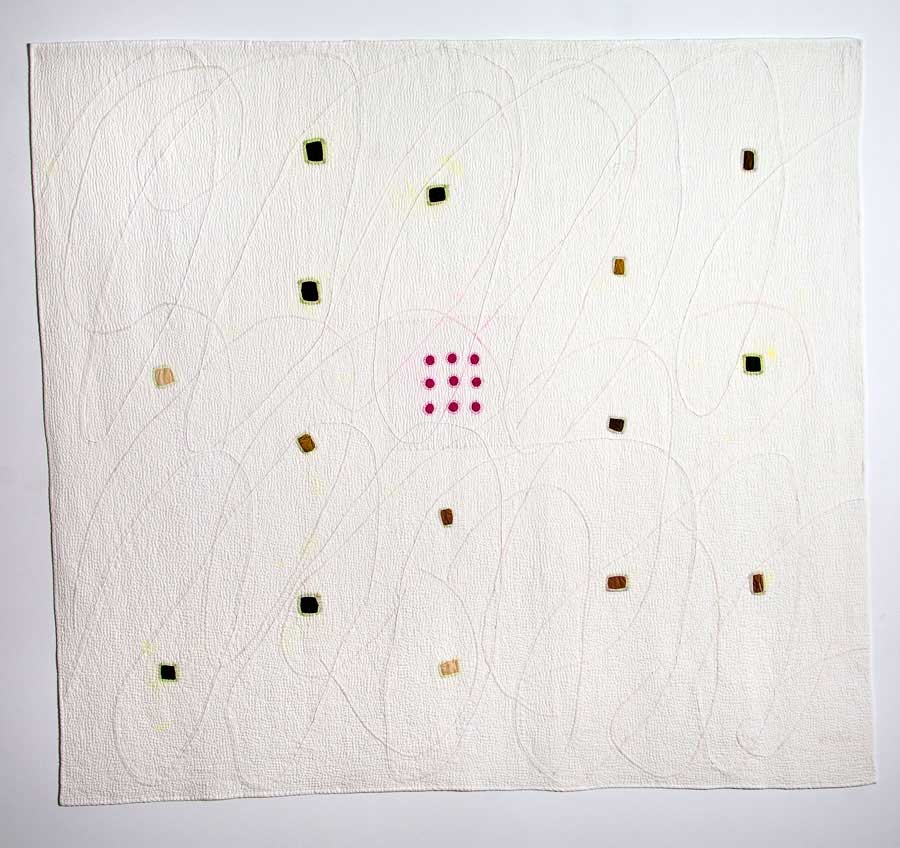
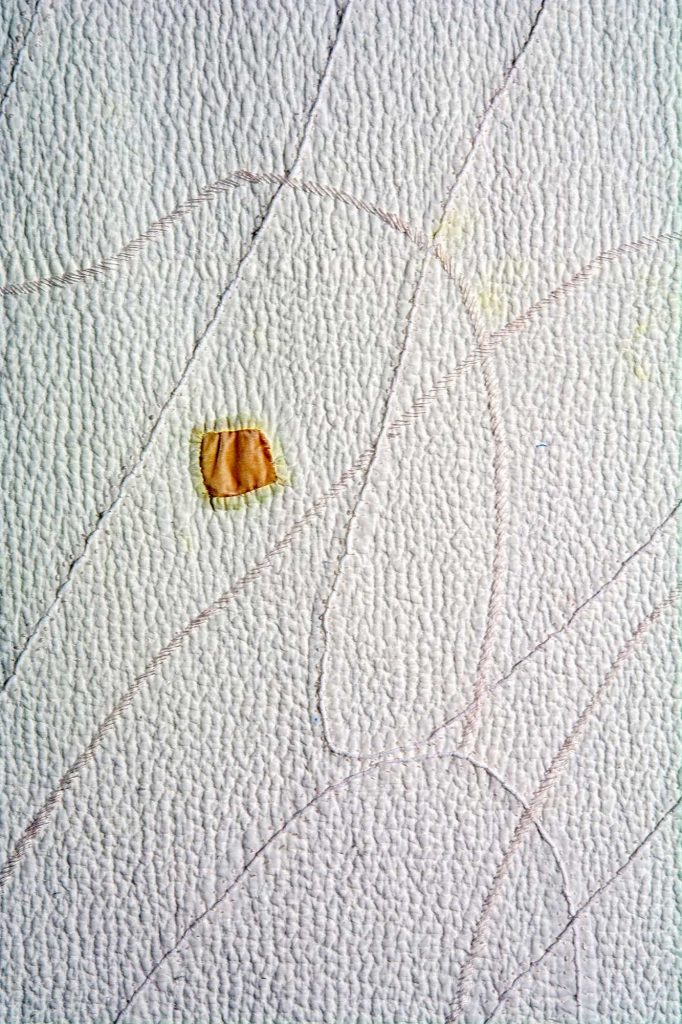
‘The Cloud in Me'(left) & detail (right) by Judy Martin
What do you consider to have been the highlight of your career so far?
“The Manitoulin Circle Project 2009 – 2013
In this project I worked with my local community to create large meditation panels for the local church. We worked in the church hall every Thursday for four years, and did hand work. The materials were purposed domestic textiles such as white linen damask table linens, women’s handkerchiefs, wool blankets, and hand- made doilies and they were manipulated into my original designs of large circles within large squares. The resulting panels are beautiful documents of communal dedication. Over 140 women and men took part in the creation of the panels, some meeting loyally and regularly while others dropped in once or twice. I realise now that this larger than life project is a highlight of my career.”
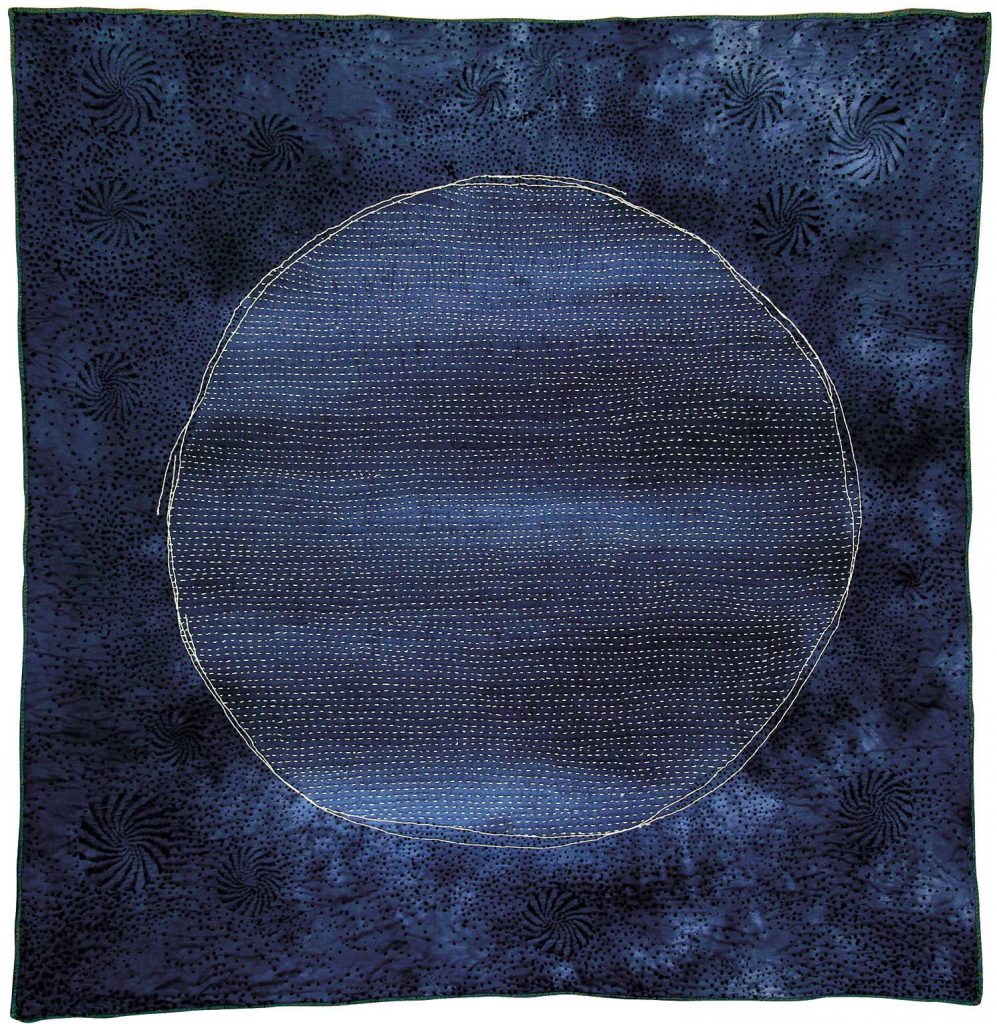
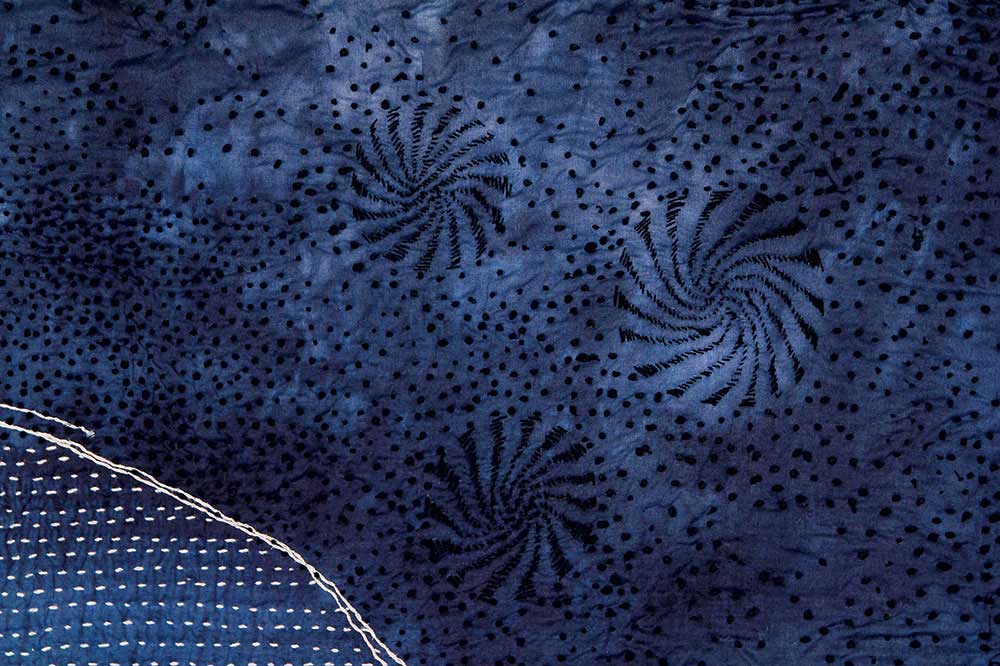
‘Basic Goodness’ (left) & detail (right) by Judy Martin
Which artists inspire you personally?
I have a long list.
From Europe: Magdalena Abakanowicz , Louise Bourgeois (she was born in France, moved to USA ), Polly Binns, Sati Zech, Gaston Bachelard ( not an artist, but a poet-philosopher)
From USA: Kiki Smith, Agnes Martin (her writing especially), Richard Serra, Rosie Lee Tomkins and the Gee Bend quilters from southern USA, Ann Hamilton, Cy Twombly, Jude Hill, Nancy Crow, Sheila Hicks, Lenore Tawney, Eva Hesse, Radka Donnell (her book Quilt Poetics especially)
From Canada: Joyce Wieland , Dorothy Caldwell, Anna Torma, Emily Carr, Betty Goodwin
From Africa: El Anatsui
From Japan: the Nui Project
From Korea: Kyung Ae Wang
From Australia: the many Aboriginal Women painters from this country. Emily Kame Kngwareye, Wintjiya Napaltjarri are just two names, there are many others. Their work is packed with spirit.
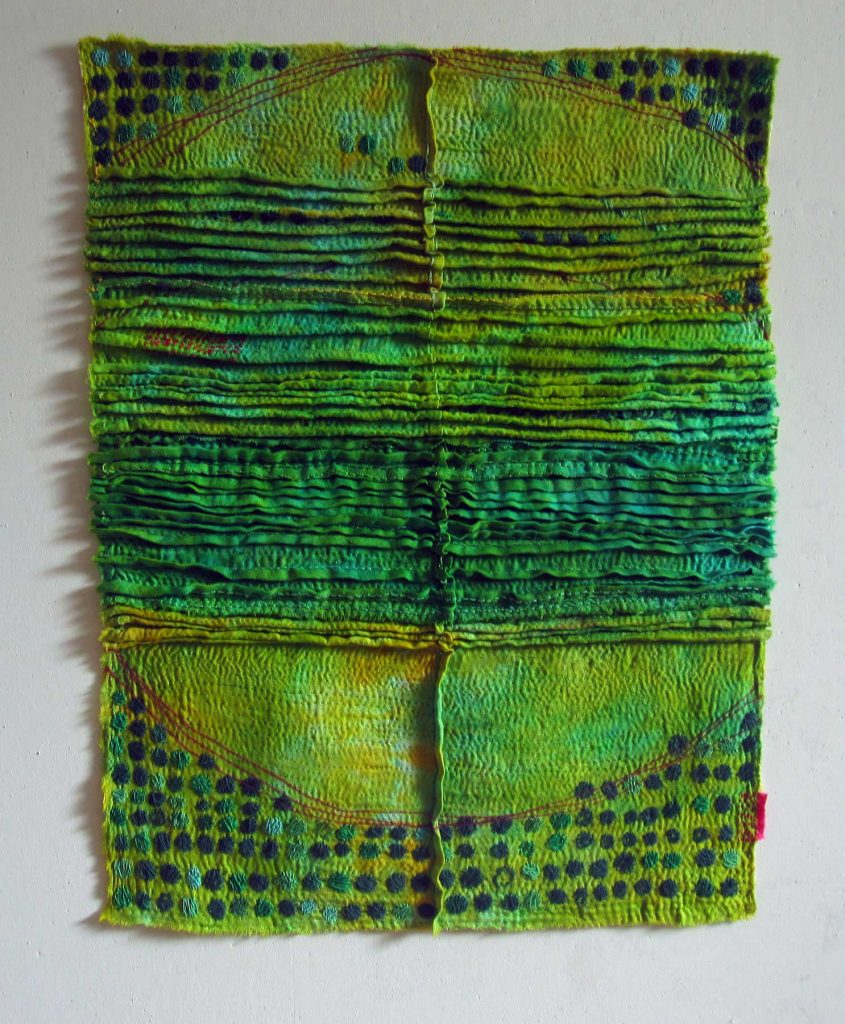
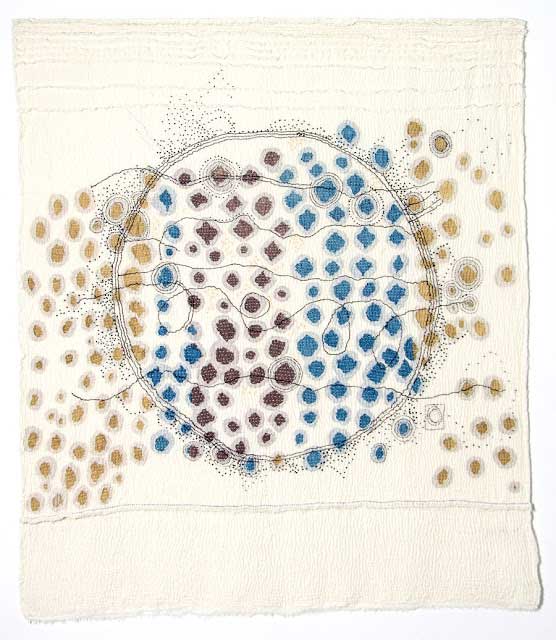
What is your development process for your designs, if any?
This is a good question
Every piece has a different route, and some routes have more pot-holes to make you stumble and mountains to make you climb than others do. Generally each starts with a small spark of an idea that I quickly jot down into my daily journal with just use a few words or a rough ball point pen sketch. The next day when I come across those words or that sketch, I might consider the idea further with more words, more sketches.
This makes it sound as if my work always comes from sketches first – but that is not the case. I go from the sketchbook to the design wall and find that new things happen there. My first idea is often changed completely, or perhaps additional ideas come forth from working with the materials on that design wall. I translate the new ideas into more ball point sketches and it’s back and forth from the large wall to the sketchbook. Also important to my process are liminal moments. If I look at the design wall before bed it often happens that I have figured something out about it during sleep, and I try to stay in that half-way space before waking up completely to be aware of the solution.
When I start to stitch I find it really important to continue to pin the work up and look at it. I often leave it on the wall and go do something completely different. Later, when I chance upon the work from the doorway, I will know if it the stitches work or not. Very often I need to un-do it and start over. Starting over is part of the creative process.
Most of my best pieces have taken me 3 or 4 years to make as I give them rests for long periods. Looking at my own work with fresh eyes and more life experience is important to my pared back style. Although working towards a deadline is good for me, it sometimes stifles me. Stitch artists have to think that they have all the time in the world. The amount of time needed can be daunting but we can’t worry about that. The stitched mark has more power than a painted mark. The stitched mark has the intimate human touch. It has the breath of time, the in and out of the needle, connecting it with our spirit.

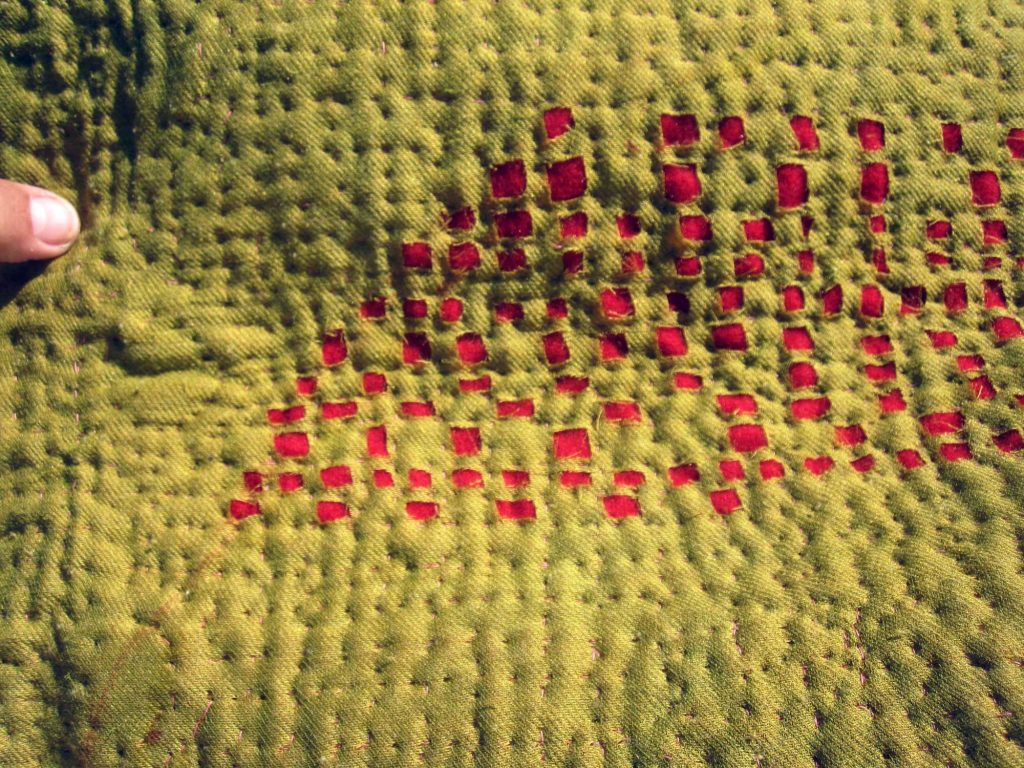
How did you develop your own style and inner voice? Was there a defining moment for you or was it a gradual process?
I think it was a gradual process. The main thing I did right from the beginning was to choose a subject that I absolutely loved. It had to be something that I needed to personally communicate, not caring if it would be acceptable in the larger art world. I started my career with what many would term gendered subjects and I use gendered techniques I suppose. When I was a young mother, I painted my children in watercolour. I started stitching when they were young because I could take the work with me to the sand pile or playground and it could be picked up and put down when I was so often interrupted.
I also read anything I could find about mostly women artists and writers and found out that the best artists were true to themselves, and this inspired me to do the same. It sounds easy, but to follow an inner voice or dream is actually quite a brave thing to do. This self-study helped me do my art while living a so-called normal life of wife and mother.
Once the kids left home, I started the embroidery degree from the UK through Julia Caprara’s school of textile art, OPUS. My inner voice became even clearer through this directed study and I continue to work from the thesis I developed at that time. Gaston Bachelard’s writings about inner immensity, Agnes Martin’s writings about paring away anything unnecessary, and Ann Hamilton’s ideas about how we know through every sense, especially the sense of touch continue to inform my work. I’d like to especially thank my tutors Catherine Dormor, Kay Swancutt and Joan Richardson.
I do believe that art is the best way to express our inner selves and communicate heart to heart with our viewer’s unique inner selves.
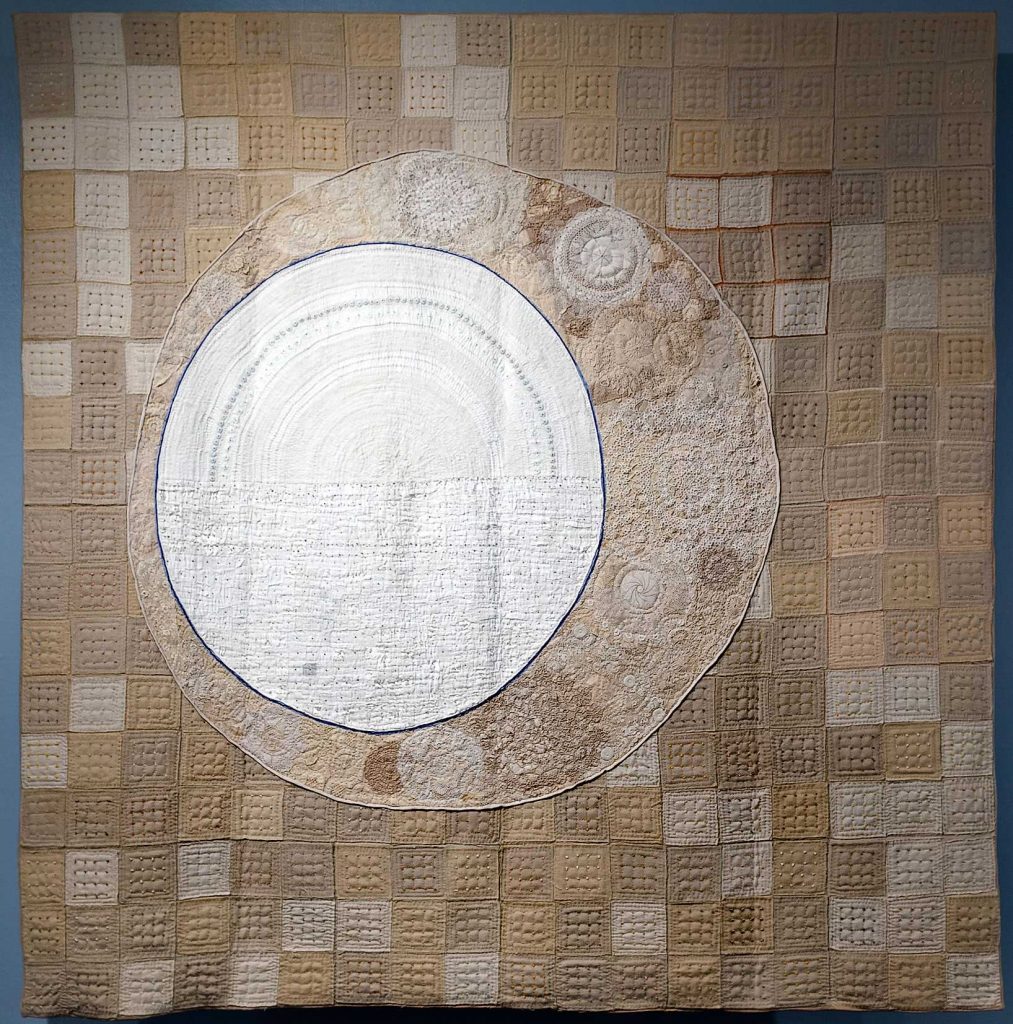
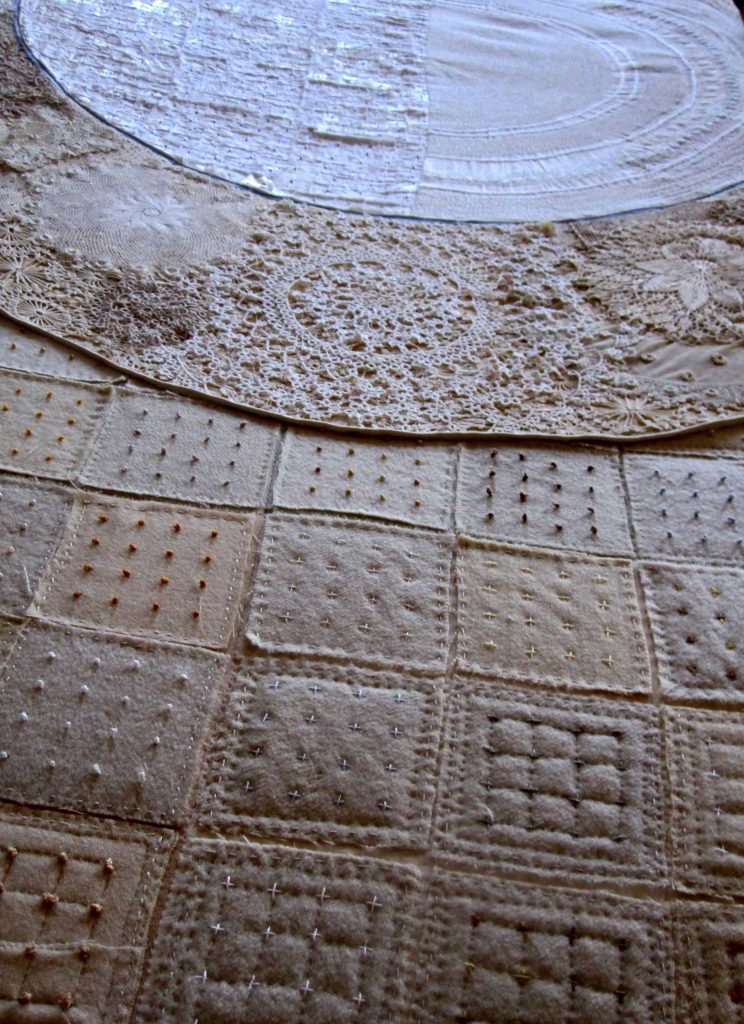
‘Layers of Time’, (left) & detail (right) by Judy Martin
Do you ever feel de-motivated? If so how do you motivate yourself on those off days?
Because I always have stitching to do, even if I am not inspired to design I am able to keep the flow of art making going. But to answer your question, I do like to look at other artists’ work on the internet or in a favourite art book. I also re-read my journals, and when I come across some of those spark-ideas that I mentioned earlier, and am inspired all over again.
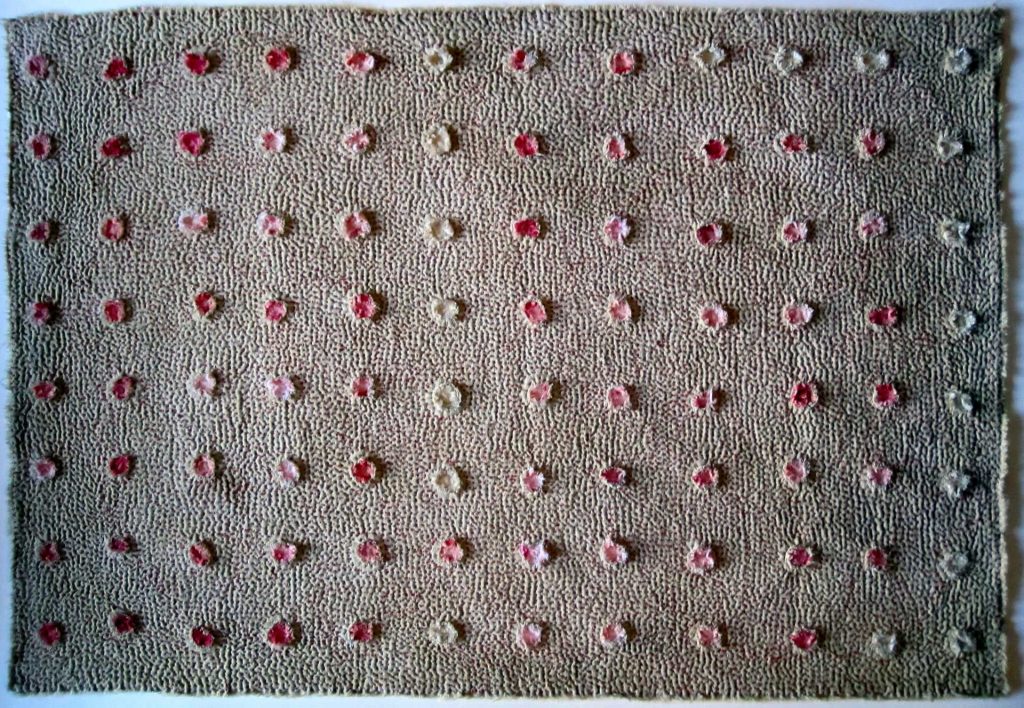
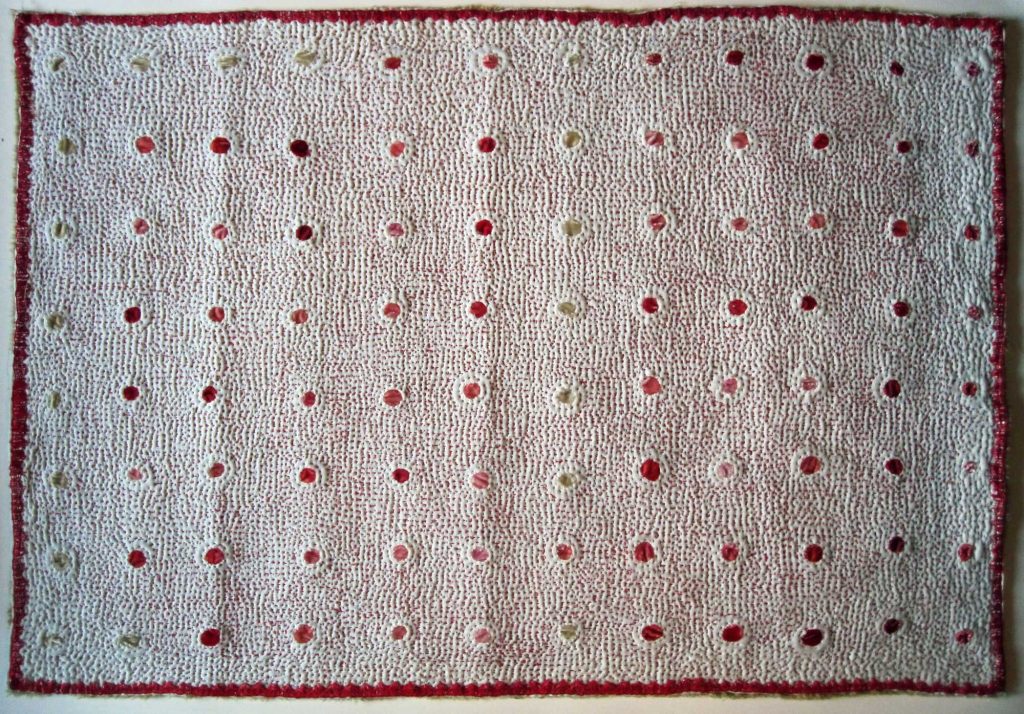
‘Yin Yin’ side A (left) & reverse (right) by Judy Martin
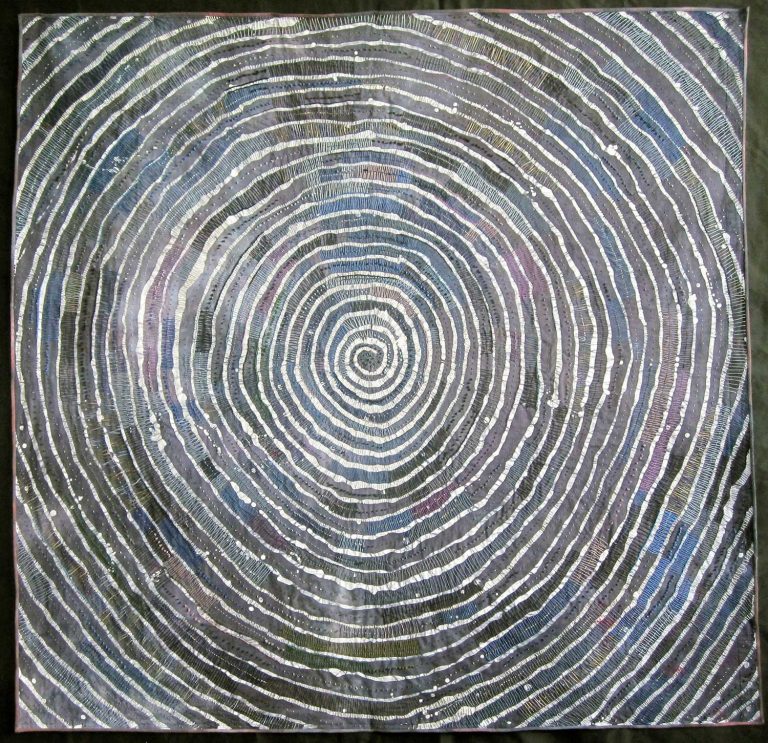
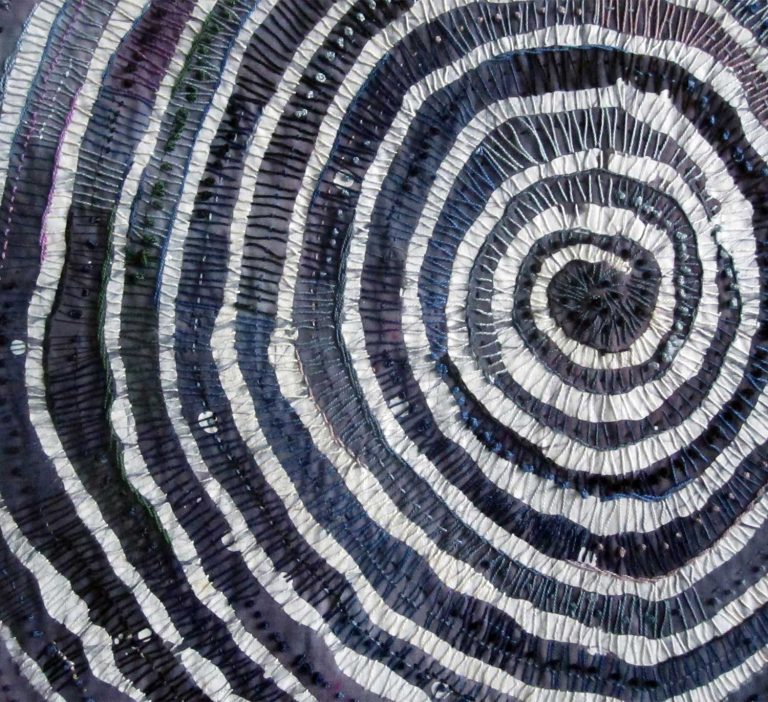
‘Energy Cloth’ (left) & detail (right) by Judy Martin
What advice would you give to students who are undertaking courses with us?
Look at other art forms besides textile art. Look at painting and drawing and sculpture. Read about artists’ ideas and concepts about what they want to communicate and also about their lives. Read literature and poetry. Do not try to please anyone but yourself. Try to articulate to yourself what it is you truly love and how can you communicate that. Go into your own inner dream world for subjects.
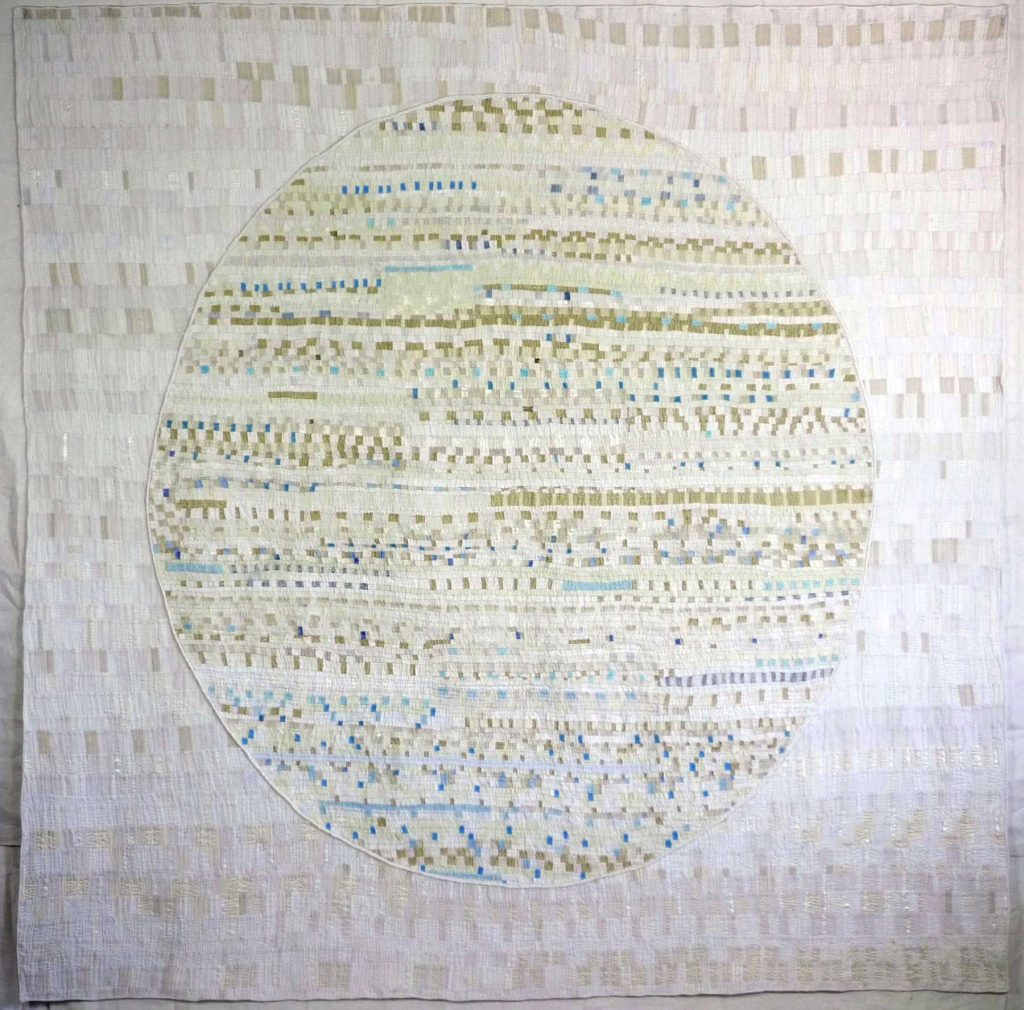
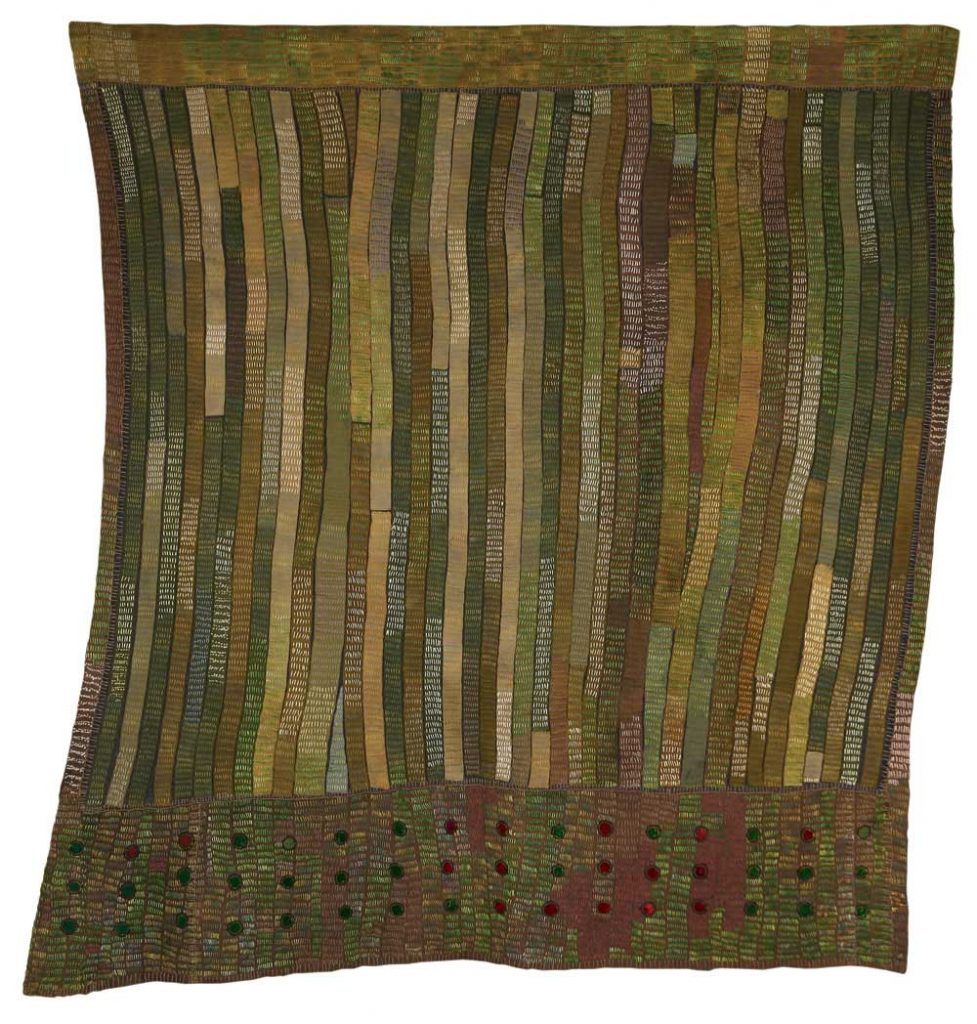
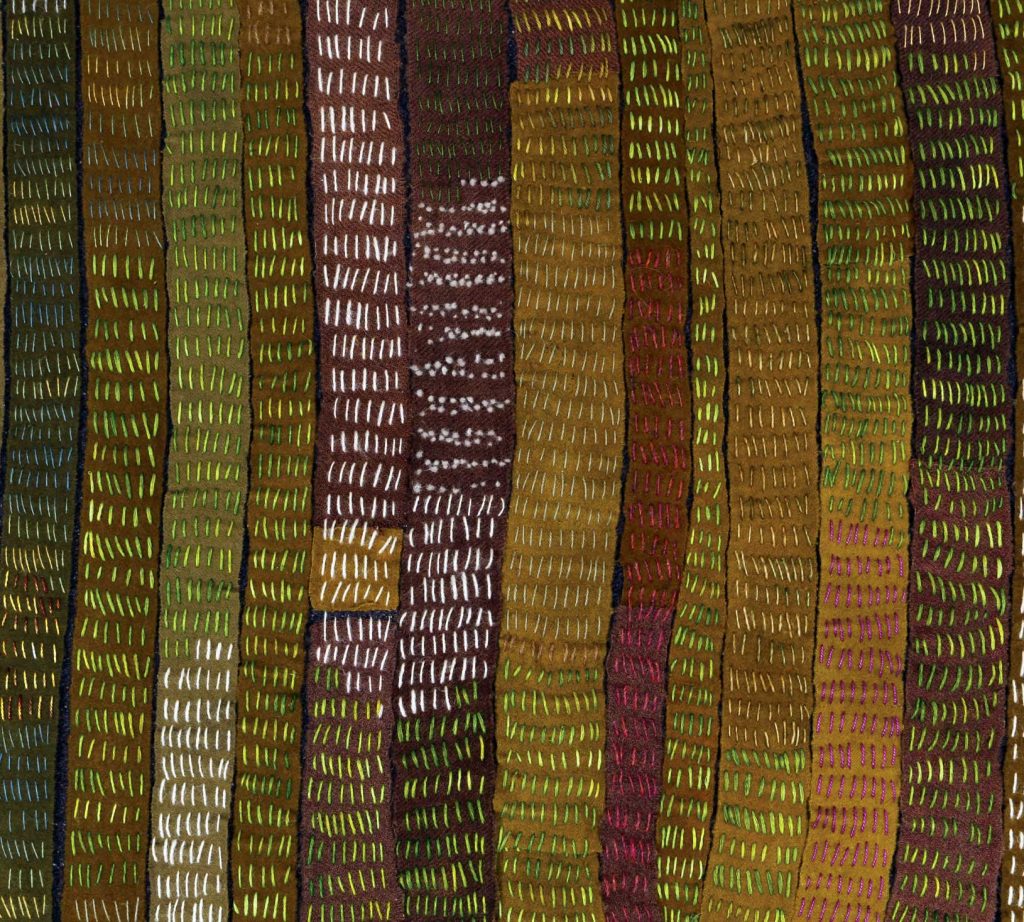
‘Beginning with Time Day’, (left) & detail (right) by Judy Martin

